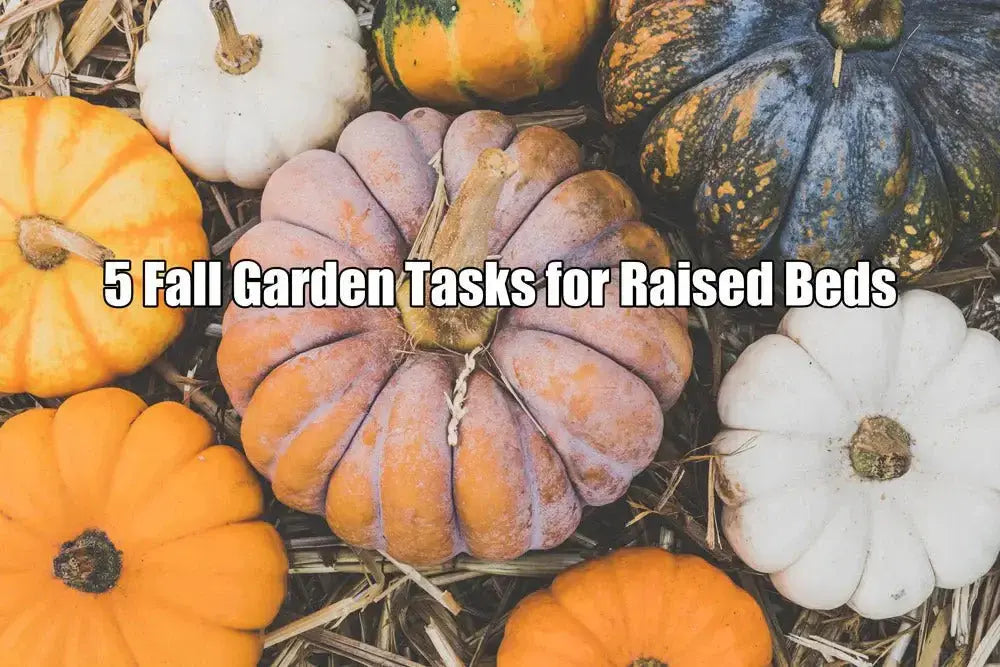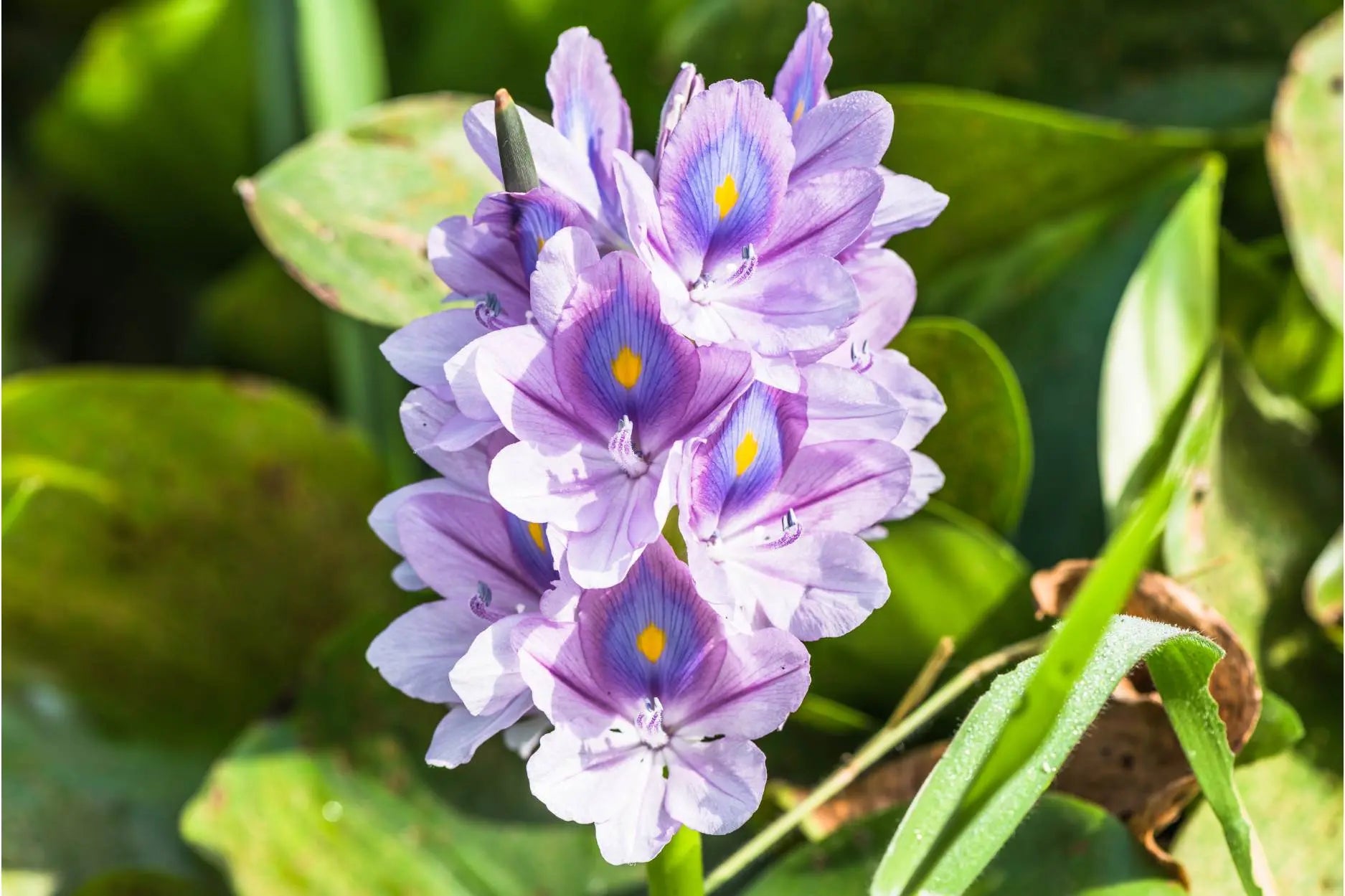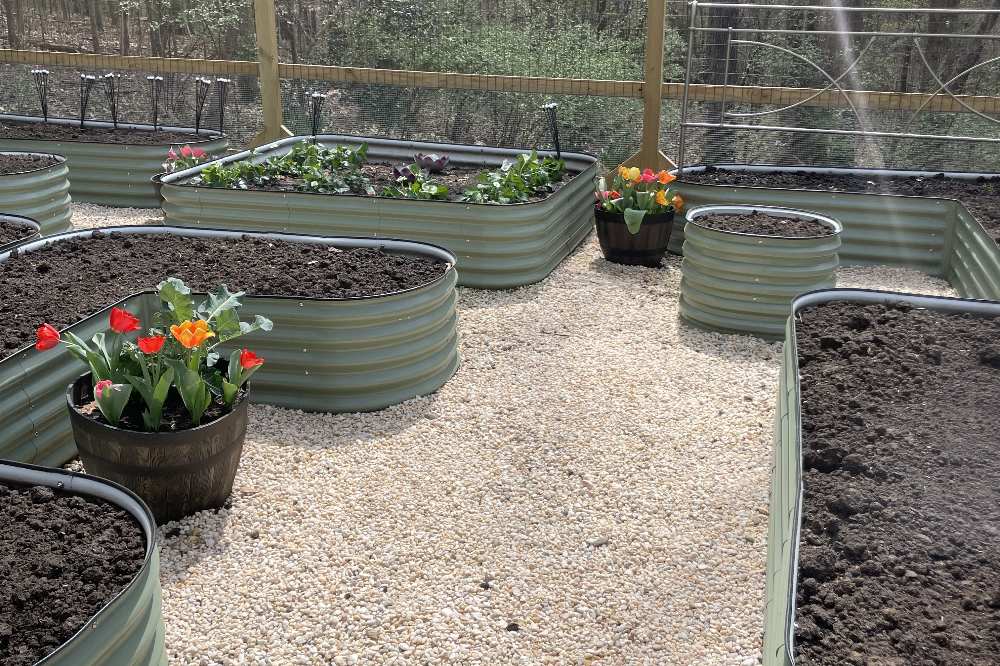Vegega Garden
August 16th, 2025
How to Grow Asparagus
When & How to Harvest Corn
Let’s be honest, growing asparagus is a bit of a commitment. It’s not one of those fast-growing veggies you plant in spring and harvest by summer. But trust us when we say, it’s worth the wait! Once this perennial veggie gets established, it comes back year after year with minimal fuss and maximum flavor.
There’s something magical about walking out to the garden in early spring and seeing those tender green spears poking up through the soil. We’ve grown asparagus in different setups, and metal raised garden beds are definitely our favorite!
So today, we’re sharing everything we’ve learned - from planting and maintenance to how to harvest asparagus and keep your patch going strong.
⬇️Click and Jump to section
- Why Grow Asparagus?
- Does Asparagus Grow Well in Raised Beds?
- Choosing Between Seeds and Crowns
- How to Plant Asparagus in Raised Beds
- How Long Does Asparagus Take to Grow?
- Growing Asparagus - Care Tips
- How to Harvest Asparagus
- How Long Does Asparagus Last?
- Common Asparagus Problems
Why Grow Asparagus?
Asparagus is one of the few vegetables that keeps on giving. Once it’s established, you’ll get fresh spears every spring for up to 20 years - yes, you read that right!
Asparagus is:
- Packed with nutrients (fiber, folate, vitamins A, C, E, and K)
- A beautiful plant that doubles as an edible landscape feature
- Surprisingly low-maintenance after year two
The only catch? You’ll need to be patient in the beginning. But good things come to those who mulch, water, and wait.
Does Asparagus Grow Well in Raised Beds?

Absolutely! When you grow asparagus in raised beds, you give the plants the excellent drainage they crave while also making your life easier when it comes to weeding, fertilizing, and harvesting.
Raised beds also warm up faster in spring, which means earlier spears and longer harvest windows. We use deep, sturdy beds (at least 12 to 18 inches high) with loose, fertile soil. Asparagus roots (called crowns) grow wide and deep, so you want plenty of space for them to stretch out.
Choosing Between Seeds and Crowns

You can start asparagus from seed, but it’s not for the impatient. It takes an extra year or two before you can begin harvesting. We prefer starting with one-year-old crowns (essentially bare-root baby asparagus plants), which shaves time off your waiting period and tends to produce stronger plants.
When selecting crowns, look for:
- Plump, firm roots (avoid anything mushy or dry)
- All-male hybrids like Jersey Giant or Millennium, if you want maximum spear production (they don’t waste energy on making seeds)
How to Plant Asparagus in Raised Beds

Planting asparagus isn’t complicated, but it’s a bit different from your average veggie.
Here’s what you should do:
- Dig a trench about 6-8 inches deep down the center of your raised bed.
- Mound soil down the trench line to create a ridge and place the crowns on top, spreading their roots over the mound.
- Space crowns about 12-18 inches apart.
- Cover with 2 inches of soil, and then gradually backfill over the next several weeks as the plants grow taller. This encourages deep root development.
Tip: Add compost and aged manure to the trench before planting. This gives the crowns a strong start.
How Long Does Asparagus Take to Grow?
If you plant crowns, you’ll need to wait two full growing seasons before your first harvest. We know, it sounds like a long time. But the wait is worth it.
Growing Asparagus - Care Tips

Once your plants are in the ground, it is very easy to keep them healthy. Here’s what you should focus on:
- Water - Asparagus likes consistent moisture, especially during its first year. Aim for about 1-1.5 inches per week and adjust as needed based on weather.
- Mulch - Mulch is your best friend here. It keeps the soil moist, suppresses weeds, and adds organic matter over time. Here, you can use shredded leaves.
- Feed - Every fall, you can top the bed with a thick layer of compost and aged manure. In spring, you can use a balanced fertilizer to give the plants a boost.
- Fern Care - After the harvest season ends, the spears grow into tall, airy ferns. Let these grow all summer – they feed the roots. In late fall, once they’ve turned brown, cut them back to ground level.
How to Harvest Asparagus

Here’s exactly how to harvest asparagus:
- Wait until the spears are 6-8 inches tall and about the thickness of your finger.
- Use a sharp knife or asparagus snapper to cut the spear just below the soil line.
- Harvest in the morning if possible, when the spears are more tender.
- Continue to harvest every couple of days during the harvest season.
- Once the spears start to get thin, it’s time to stop and let the ferns grow back.
How Long Does Asparagus Last?

A well-cared-for asparagus bed can produce for 15 to 20 years or more! That’s why it’s so important to get your initial planting right.
Here is how you can keep it strong:
- Don’t overharvest in the early years
- Replenish soil nutrients annually
- Keep beds weed-free and mulched
- Let ferns grow after harvest each year
With just a bit of seasonal care, you’ll have an almost endless supply of asparagus.
Common Asparagus Problems
Even with the best care, things can go wrong. Here are a few issues you may face (and how to fix them):
- Spindly spears - Usually caused if you harvest too soon or from nutrient deficiencies. Add compost and cut back on the harvest the next season.
- Rust or blight - These fungal diseases show up as reddish spots. Remove infected ferns and avoid overhead watering.
- Asparagus beetles - Small, striped bugs that eat spears and ferns. Handpick them or use neem oil on them.
Recommended Raised Beds for Fall Crops
Conclusion
Growing asparagus might take more patience than other vegetables, but once you get the hang of it, it's one of the easiest crops to grow. When you’re in it for the long haul, the rewards are oh-so-sweet! So go ahead, plant your crowns, mulch them well, and let nature do the rest. Keep on reading our blogs!



